- Clinical Technology
- Adult Immunization
- Hepatology
- Pediatric Immunization
- Screening
- Psychiatry
- Allergy
- Women's Health
- Cardiology
- Pediatrics
- Dermatology
- Endocrinology
- Pain Management
- Gastroenterology
- Infectious Disease
- Obesity Medicine
- Rheumatology
- Nephrology
- Neurology
- Pulmonology
Taking the Bite Out of Lyme Disease Dx: A Photo Quiz
Lyme disease and other tick-borne illnesses occur most often in the late spring and summer months, many with similar presentations, making this a good time to test your knowledge of these pesty posers.
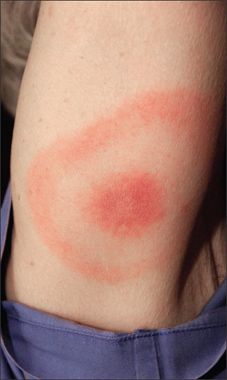
Question 1:
Erythema migrans, the characteristic rash of Lyme disease, often has a bull’s-eye appearance. The rash is seen in about 80% of patients with Lyme disease.
NEXT QUESTION »
For the discussion, click here.
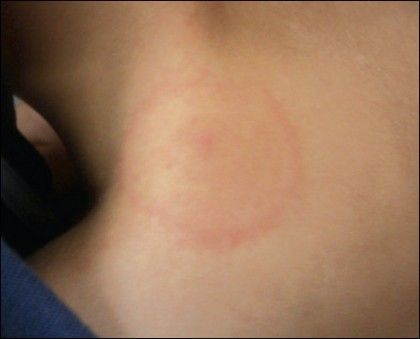
Question 2:
The mother of a 4-year-old boy noticed a rash on her son’s left shoulder the day before. The otherwise healthy, asymptomatic boy plays outdoors daily in his hometown in West Virginia. Earlier in the week, he told his mother that he had felt a “scab” on his shoulder and had picked it off.
NEXT QUESTION »
For the discussion, click here.
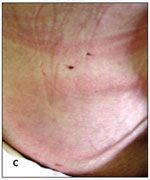
Question 3:
A previously healthy 21-year-old cable lineman sought medical attention because of palpitations and dizziness. An ECG showed first-degree heart block. His symptoms worsened, and he presented to an ED with chest pain and fever. For the previous 3 weeks he had myalgia; arthralgia; fatigue; and an expanding, erythematous, nonpruritic rash on his trunk and extremities. He did not recall any tick bites.
NEXT QUESTION »
For the discussion, click here.
For the answer, click here.
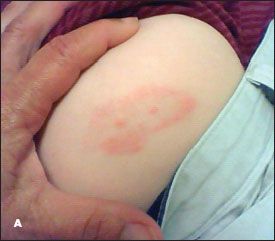
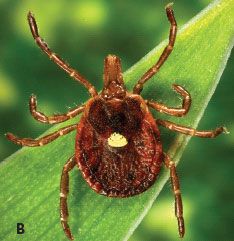
Question 4:
An 8-year-old boy in rural central Virginia was seen in early summer for evaluation of a rash on his buttock that had become pruritic. His father had removed a tick about 10 days earlier. The 4- x 2-cm lesion had 2 central papules with an outer ring in a figure-8 pattern, consistent with 2 bites and 2 primary lesions. It appeared to be consistent with erythema migrans. The removed tick had a white spot on its dorsum.
NEXT QUESTION »
For the discussion, click here.
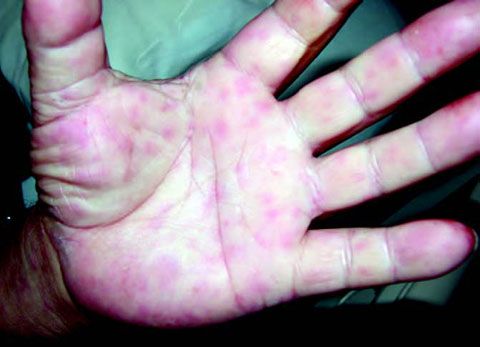
Question 5:
This rash started on a 55-year-old man’s forearms and legs and spread to his trunk, palms, and soles. He also had fever, headache, myalgia, arthralgia, and a history of a recent tick bite. The rash often starts as a macular or maculopapular eruption and then usually becomes petechial. Up to one-third of patients with the patient’s condition, which occurs mostly during the spring and summer, do not recall a recent tick bite or tick contact.
NEXT QUESTION »
For the discussion, click here.
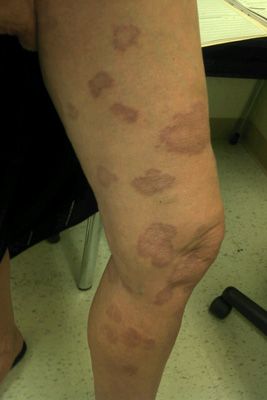
Question 6:
A 51-year-old woman presented with a self-diagnosis of “ringworm” on the dorsum of her left hand and her right posterior calf. The nonpruritic, violaceous, annular, and erythematous plaques were diagnosed as tinea corporis. The calf lesion grew larger, and new nummular and annular plaques involved her legs, arms, abdomen, and back. A new diagnosis was made of generalized granuloma annulare.
ANSWER KEY »
For the discussion, click here.
ANSWER KEY:
Question 1. D
Question 2. D
Question 3. A
Question 4. B
Question 5. C
Question 6. A
